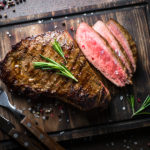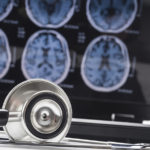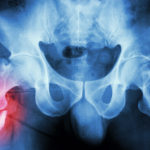By Bonnie Jenkins, Advanced Natural Wellness
Pardon me while I fume.
What’s making me so mad? An announcement by the American Academy of Pediatrics (AAP) touting new guidelines for treating obese children. According to the AAP’s Committee on Nutrition, toddlers as young as two should be screened for high cholesterol if they have a family history of heart disease.
But here’s the real kicker – and you may want to sit down before reading this. The AAP is recommending that kids as young as eight years old be treated with statin drugs to lower their risk of developing heart disease. Excuse me?
Little grown-ups?
Before I go off on a tirade about the AAP, whose motto is “Dedicated to the health of all children,” let’s take a brief look at these drugs.
Statin drugs, like Zocor and Lipitor, are enthusiastically prescribed to tens of millions of people around the world. So they must be safe, right? Not a chance! Experts say that muscle pain and other side effects occur in up to 30 percent of statin patients. And for some folks, these side effects can be potentially disabling or even deadly. Lou Gehrig’s disease (also called amyotrophic lateral sclerosis), liver and kidney problems, muscle weakness, numbness in the hands and feet, and memory loss have been reported in adults taking these cholesterol-lowering drugs.
Open your arteries, improve blood flow for a new health miracle...
Did you know your circulatory system has over 60,000 miles of arteries, veins and other blood vessels, if stretched end to end?
But as you age, your blood vessels undergo changes, which may cause them to stiffen, thicken and get clogged.
GOOD NEWS! Doctors have now identified a “Miracle Molecule” inside your arteries that helps OPEN your arteries and IMPROVE blood flow.
It’s what Dr. Valentin Fuster calls it, "One of the most important discoveries in the history of cardiovascular medicine."To you, that means...
- Healthy blood pressure
- Sharper mind and memory
- Skyrocketing energy and muscular strength
- Increased pleasure and passion in the bedroom
- Improved circulation to every cell and organ in your body
Go here to discover a new natural way to significantly boost the levels of this miracle molecule in YOUR body NOW!
So what side effects can our children expect? Hard to tell, since there haven’t been any long-term studies on children taking statin drugs. The best the AAP can do is to extrapolate the studies in adults and reduce the dosage based on a lower body weight.
One major problem with this kind of logic is that children are not miniature adults. And here’s the real irony: According to the AAP, the organization was founded in 1930 by 35 pediatricians who were committed to transforming medicine so that doctors would recognize that children have special developmental and health needs; that children should never be treated as miniature adults.
Another problem is that the AAP can’t tell us whether giving statins to a child will lower the risk for heart attack in middle age. And would a child need to take these drugs for the rest of his or her life?
Follow the money
So what’s really behind these new recommendations? If you are thinking money, you’re probably right.
Like most specialty medical groups, the AAP gets a large part of their funding from drug companies. There may also be personal connections – not an uncommon scenario between industry and medicine. In fact, the National Cholesterol Education Program’s (NCEP) recommendations on statins and cholesterol lowering, upon which the academy’s guidelines are partly based, was headed up a panel of nine authors, eight of whom had financial ties to statin makers.
So, could pharmaceutical companies have an influence, either directly or indirectly, on the AAP’s recommendations? You bet!
Are You Suffering From...
- Love handles and a pot belly
- Romance that isn't what it used to
- Forgetfulness and inattention
- Low (or no) strength and endurance
- A sex drive that's shifted into neutral...or worse
If so...you may have Mature Male Burnout. Click here to discover more about this unique condition and what you can do about it.
Generation Rx
I think it’s interesting that the AAP’s knee-jerk reaction to cardiovascular health in children focuses on prescription drugs instead of diet and exercise. Sure, popping a pill is a lot easier than nagging your kids to eat their vegetables or turn off the TV. But, while parents play a major role in influencing their children toward healthier habits, the deck is stacked against them.
Kids today are bombarded with widely available and aggressively advertised fast foods, soft drinks and nutritionally-starved snacks. As a result, overall calorie intake from sweetened drinks has shot up a whopping 135 percent since 1997. Americans also drank approximately 40 percent fewer calories from milk, and milk consumption among kids dropped from 13.2 percent of total calories to 8.3 percent. At the same time, soda consumption doubled in children.
But, instead of promoting healthy habits and working to eliminate these unhealthy influences, the AAP is pushing the “magic bullet” approach. Worse yet, thanks to the new recommendations, the AAP is opening the door for drug companies to assail anxious parents with drug ads that encourage them to insist on prescriptions for their children.
One last thing . . .
It’s frightening, but up to 25 percent of American children are considered obese. Not only does this statistic paint a bleak future for these kids – 80 percent of overweight kids become overweight adults – the obesity epidemic impacts all of us in the form of higher healthcare costs and lower productivity.
One way you can lobby for healthier kids is to call or write to your local and state officials. Demand the removal of junk food and soda machines from school campuses. And ask them to reinstate mandatory P.E. classes. You can also contact food manufacturers directly and voice your displeasure with their reliance on high-fructose corn syrup and trans fat.
On a more personal level, one of the best strategies to combat excess weight in a child is to improve the diet and exercise level of the whole family. Encourage a healthy lifestyle by highlighting the positive. For example, the fun of playing outside or the variety of fresh fruit you can get year-round. Emphasize the benefits of exercise apart from weight management – it makes their heart, lungs and other muscles stronger. If you foster a child’s natural inclination to run around, explore and eat only when hungry, a healthy weight should take care of itself.
This just in . . .
There’s hope for people who suffer from frequent heartburn. According to a new study, a high dose (40 mg.) of astaxanthin – the pigment that gives salmon its pink color – can significantly cool that fire in your chest. And the effects were most pronounced in people infected with the Helicobacter pylori bacterium that causes stomach ulcers.
The study recruited 132 people with chronic indigestion and randomly assigned them to receive 16 or 40 mg. of astaxanthin or a placebo daily for four weeks. At the end of the study, the researchers noted that there wasn’t any difference in general abdominal pain or indigestion among the three groups. But when they focused on acid reflux syndrome, the participants taking the 40 mg. dose reported significant improvement.
If 40 mg. sounds like a lot, it is. Typically, people take just 2 to 8 mg. of supplemental astaxanthin for conditions like ulcers, heart disease or vision. But higher levels – upwards of the 40 mg. used in this study – can be found in a single serving of sockeye salmon. And studies using doses up to 100 mg. haven’t yielded any adverse effects, even when taken on a long-term basis.
So if you suffer from chronic heartburn – and your doctor can’t find anything wrong – try this soothing protocol:
- Lose weight. Studies show that being overweight dramatically increases your risk of heartburn and gastroesophageal reflux disease (GERD).
- Eat slowly and chew your food thoroughly.
- Avoid smoking, excessive alcohol, spicy foods and acidic beverages to ease irritation.
- Take 20-40 mg. of astaxanthin daily.
For instant relief, you can also chew 250 to 500 mg. of DGL (deglycyrrhizinated licorice) with meals or anytime heartburn strikes. As a bonus, DGL helps support the mucosal lining of the stomach and esophagus. And, studies have proven that DGL is just as effective as conventional drugs that suppress or neutralize excess gastric acids – without side effects!
References:
Daniels SR, Greer FR, and the Committee on Nutrition. “Lipid Screening and Cardiovascular Health in Childhood.” Pediatrics. 2008;122: 198-208.
Kupcinskas L, Lafolie P, Lignell A, et al. “Efficacy of the natural antioxidant astaxanthin in the treatment of functional dyspepsia in patients with or without Helicobacter pylori infection: A prospective, randomized, double blind, and placebo-controlled study.” Phytomedicine. 2008;15:391-399.
Massarrat S. “Smoking and gut.” Archives of Iranian Medicine. 2008;11:293-305.
Ruhl CE, Everhart JE. “Overweight, but not high dietary fat intake, increases risk of gastroesophageal reflux disease hospitalization: the NHANES I Epidemiologic Followup Study. First National Health and Nutrition Examination Survey.” Annals of Epidemiology. 1999;9:424–435.






